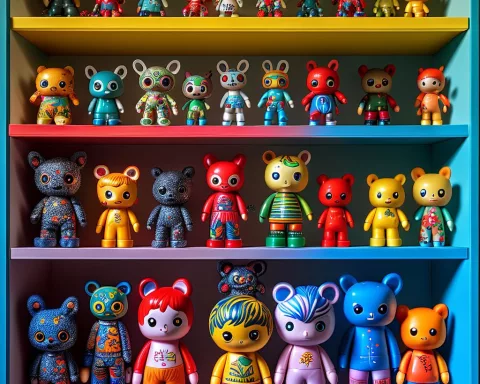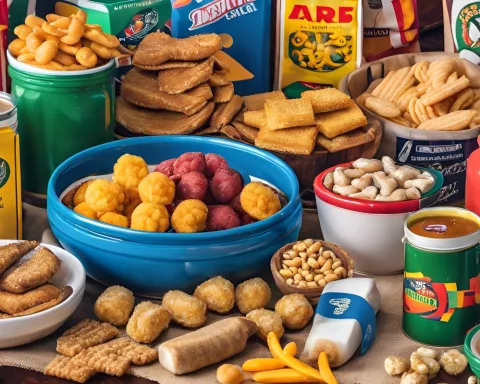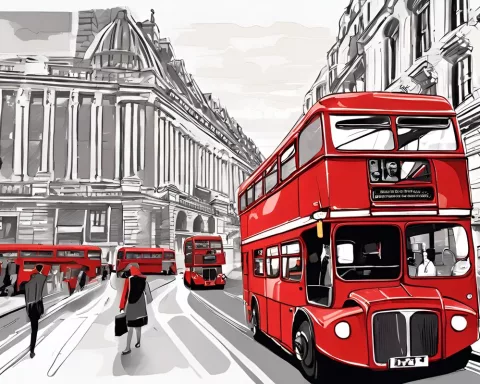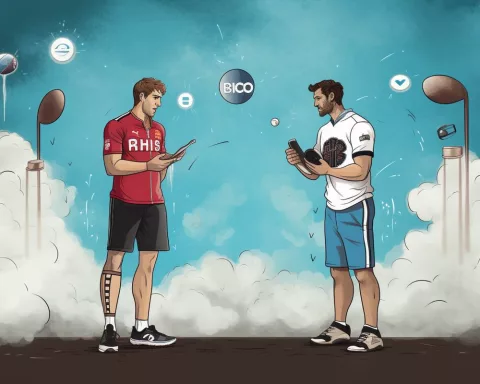South African commercials bring back warm memories of laughter and catchy phrases that many still remember today. Ads like the Cremora one, with its famous line “It’s not inside, it’s on top!” and the funny Lunch Bar tug-of-war, were not just about selling products; they told little stories that entertained us. The Sun City ad, paired with Queen’s “We Will Rock You,” made us dream of fun vacations, while Klipdrift’s humorous farmer showed how local flavors can spark joy. As we look back, these commercials remind us of a time when TV ads connected us all, creating shared moments that still make us smile.
What are some iconic South African commercials?
Iconic South African commercials include the Cremora ad with its memorable catchphrase, “It’s not inside, it’s on top!” and Lunch Bar’s humorous tug-of-war. Other notable mentions are the Sun City ad featuring “We Will Rock You,” Klipdrift’s “Met Eish… ja” humor, and Vodacom’s Mo the Meerkat.
Before the era of streaming platforms like Showmax and Netflix, traditional television served as the primary source of entertainment for South Africans. The interludes between TV shows were often filled with advertisements that didn’t just sell products but also mirrored the cultural pulse of the nation. These commercials were much more than brief interruptions; they were mini-stories that left a lasting imprint on viewers, creating unforgettable moments that continue to resonate. Join us as we take a heartfelt trip down memory lane to revisit some of South Africa’s most celebrated TV ads, which hold a special place in the collective memory of the country.
The Legacy of Cremora: “It’s not inside, it’s on top!”
Among the pantheon of legendary South African commercials, the Cremora ad holds a special place. This iconic advertisement featured a man in a desperate quest for his coffee creamer, leading to his frustrated outburst, “It’s not inside, it’s ooon top!” This phrase quickly became a part of everyday language, showcasing the power of a simple yet impactful line to captivate an audience. The clever relatability and humor in the ad turned it into a cultural touchstone almost instantly.
This commercial was a masterclass in the effective use of simplicity in advertising. The narrative was straightforward, but the emotional connection it fostered made it memorable. The ad’s success wasn’t just in the product it sold but in the way it resonated with ordinary life experiences, making it a classic example of effective storytelling in advertising.
Moreover, the Cremora ad demonstrated the importance of catchphrases in marketing. By embedding the phrase into the public consciousness, the ad ensured that Cremora remained top-of-mind for consumers. This approach not only bolstered brand recognition but also created a lasting emotional bond with the audience.
Energizing Entertainment: Lunch Bar’s Tug of War
The 1990s brought us another gem with the Lunch Bar commercial, a humorous depiction of how consuming the chocolate bar could grant the energy to outmatch a Scottish tug-of-war team. The protagonist’s effortless triumph and his witty exchange with his opponent struck a chord with viewers, making the ad an instant favorite. This advertisement exemplified how humor could be seamlessly integrated into product promotion, making it both entertaining and effective.
The charm of the Lunch Bar ad lay in its exaggerated yet relatable scenario. The notion that a simple chocolate bar could endow someone with extraordinary strength was both amusing and imaginative, capturing the audience’s attention. The commercial’s humorous tone and straightforward narrative ensured that it was not only entertaining but also memorable.
Additionally, this ad highlighted the role of humor in creating a strong brand identity. By associating Lunch Bar with light-hearted fun and energy, the advertisement helped to establish the brand’s personality. This approach not only differentiated Lunch Bar from its competitors but also fostered a sense of familiarity and fondness among consumers.
Sun City’s Anthem: “We Will Rock You”
Back in the 1980s, Sun City released a commercial that became a defining moment in South African advertising. By featuring Queen’s globally recognized anthem, “We Will Rock You,” the ad promoted Sun City as a premier holiday destination. This fusion of a worldwide hit song with the allure of Sun City resulted in a powerful and unforgettable advertisement. It stands as a testament to the strategic use of popular culture in advertising, leveraging the universal appeal of music to boost brand recognition and emotional impact.
The Sun City ad was a pioneering example of how integrating popular culture into commercials could enhance their appeal. The use of a globally recognized song created an immediate connection with the audience, making the ad both memorable and emotionally engaging. This approach demonstrated the potential of music to transcend cultural boundaries and resonate with a broad audience.
Furthermore, the commercial effectively positioned Sun City as a vibrant and exciting holiday destination. By associating the brand with a universally beloved song, the ad elevated Sun City’s image, making it synonymous with fun and entertainment. This strategic use of popular culture not only boosted brand recognition but also created a lasting emotional bond with the audience.
Klipdrift’s Humorous Twist: “Met Eish… Ja”
In 2005, Klipdrift released a commercial that quickly became a favorite among South Africans. The ad featured a local farmer who “rescued” two tourists, only to invite them to his home for a drink. When one of the tourists responded to the farmer’s offer with “Eish,” a South African expression of surprise, the farmer misunderstood it as a request for ice, responding with, “Met Eish… ja, met eish.” This humorous exchange turned into a viral catchphrase, showcasing the clever use of local dialect and situational comedy in advertising.
The Klipdrift ad was a brilliant example of how humor and local context could be woven into an engaging narrative. The misunderstanding between the farmer and the tourist was both amusing and relatable, making the ad memorable. This approach demonstrated the power of situational comedy to create a lasting impression.
Moreover, the commercial highlighted the importance of cultural context in advertising. By incorporating local expressions and scenarios, the ad resonated deeply with the South African audience, fostering a sense of familiarity and connection. This strategy not only enhanced brand affinity but also created a memorable and engaging advertisement.
Mo the Meerkat: Vodacom’s Irreverent Humor
Vodacom’s advertisement featuring Mo the Meerkat was another hit, particularly among younger viewers. Although it might not align with today’s standards, the commercial showed Mo performing a striptease, much to the amusement of audiences. The ad’s irreverent humor and the charm of its animated mascot made it a notable addition to Vodacom’s advertising lineup. This commercial underscored the importance of character-driven narratives in advertising, where a lovable mascot could significantly enhance brand affinity.
The Mo the Meerkat ad was a prime example of how character-driven narratives could captivate audiences. The animated mascot’s antics were both entertaining and endearing, making the ad memorable. This approach demonstrated the potential of mascots to create a strong emotional connection with the audience.
Additionally, the commercial highlighted the role of humor in enhancing brand appeal. By incorporating irreverent and playful elements, the ad resonated with a younger demographic, boosting Vodacom’s youthful and dynamic image. This strategy not only differentiated the brand but also fostered a sense of fun and excitement among consumers.
Honorable Mentions: Celebrating More Iconic Ads
While the aforementioned commercials stand out, several other advertisements also left a lasting impression:
-
Wimpy: I Love It When You Talk Foreign – This ad humorously captured South Africans’ love for diverse culinary experiences, highlighting the essence of local flavor.
-
Vodacom: I Like the Way You Move – Featuring upbeat music and dynamic visuals, this commercial emphasized the brand’s youthful and energetic image.
-
Sasol: Glug Glug – Known for its catchy jingle and quirky characters, the Sasol ad became an earworm for many viewers.
-
Oros: Flavor Drums – This vibrant commercial celebrated the product’s fruity flavors, appealing especially to children.
-
Simba: I Wanna Be a Simba Chippie – Simba’s playful and catchy ad encouraged viewers to join the “Simba chippie” craze.
-
Bakers Biscuits – Bakers’ ads often featured delightful scenarios that emphasized the joy of sharing and savoring their biscuits.
These advertisements collectively embody the diverse and creative spirit of South African advertising. They have not only promoted products but also fostered a sense of community and shared cultural references. Through humor, music, and relatable narratives, these ads have woven themselves into the fabric of South African society, offering both a reflection of and an influence on the times.
Reflecting on Advertising’s Golden Era
As we look back on these iconic commercials, we are reminded of the power of advertising to transcend mere product promotion. These ads have become cultural artifacts, preserving moments of collective joy, laughter, and nostalgia. In an age dominated by streaming services, these classic commercials serve as a charming reminder of a bygone era when television ads were a staple of daily life.
The enduring appeal of these advertisements lies in their ability to connect with audiences on an emotional level. Whether through humor, music, or relatable scenarios, these commercials have created lasting memories that continue to resonate. As we reminisce about these iconic ads, we celebrate not just the products they promoted but the cultural moments they captured, preserving a piece of South African history for future generations to cherish.
FAQ
What are some iconic South African commercials?
Some iconic South African commercials include the Cremora ad with the famous line, “It’s not inside, it’s on top!” and the humorous Lunch Bar tug-of-war. Other notable ads are the Sun City commercial featuring Queen’s “We Will Rock You,” Klipdrift’s hilarious farmer, and Vodacom’s Mo the Meerkat.
Why were these commercials so memorable?
These commercials were memorable because they combined humor, relatable stories, and catchy phrases that resonated with audiences. They were mini-narratives that created shared moments and emotional connections, making them more than just advertisements.
How did the Cremora ad impact South African culture?
The Cremora ad became a cultural touchstone with its catchphrase, “It’s not inside, it’s on top!” This simple yet relatable line embedded itself into everyday language, showcasing the power of advertising to influence popular culture and brand recognition.
What role did humor play in these commercials?
Humor played a significant role in creating a strong brand identity. Commercials like the Lunch Bar tug-of-war and Klipdrift’s “Met Eish… ja” showcased how humor can engage audiences, make ads entertaining, and foster familiarity with the brand.
How did music enhance the appeal of commercials like Sun City?
The use of popular music, such as Queen’s “We Will Rock You” in the Sun City ad, created an immediate connection with viewers. This strategy leveraged the universal appeal of music, enhancing the emotional impact and making the advertisement unforgettable.
What can current advertisers learn from these classic commercials?
Current advertisers can learn the importance of emotional connection, storytelling, and cultural relevance from these classic commercials. Integrating humor, relatable scenarios, and popular culture can significantly enhance brand recognition and create memorable advertising experiences that resonate with audiences.












